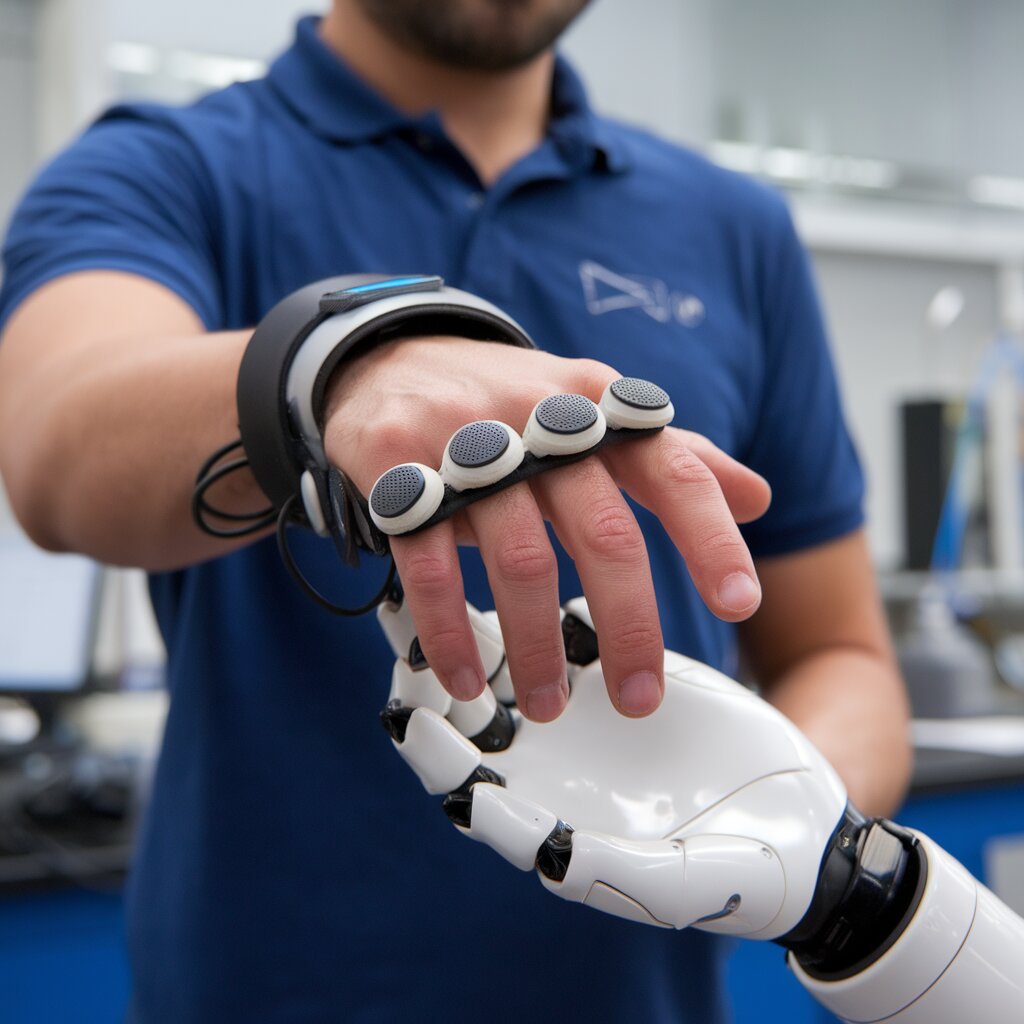In a ground-breaking leap forward for haptic technology, Northwestern Engineering researchers have developed an innovative device that moves beyond the limitations of simple vibrations, allowing for a sophisticated simulation of human touch. This cutting-edge advancement promises to transform how we experience digital interfaces, enhancing everything from entertainment to accessibility.
Central to human interaction, our skin is replete with a myriad of sensors that detect subtle variations in pressure, vibration, and stretching. However, most existing haptic technologies merely scratch the surface with basic vibrating features. Now, this new device, crafted with precision by Northwestern scientists, can replicate an array of tactile sensations, mimicking the complex nuances of touch that our skin naturally perceives.
Set to be published in the March 28 edition of the journal Science, this research introduces a small, lightweight, and wireless device that can rest comfortably on the user’s skin. Its capabilities are vast: it can apply directional force to generate sensations such as vibration, stretching, and pressure, as well as more dynamic actions like sliding and twisting. By combining these sensations, the device offers a richly textured and realistic sense of touch that can adapt seamlessly to numerous applications.
Equipped with a rechargeable battery and connecting effortlessly via Bluetooth to virtual reality headsets and smartphones, the device’s versatility stands out. Its compact design means it can be strategically placed on various parts of the body, integrated into existing wearable tech, or paired with other actuators to create a comprehensive sensory experience.
The potential applications for this technology are vast and varied. In virtual reality, it could provide richer, more immersive experiences; for individuals with visual impairments, it offers a novel way to perceive and interact with the world around them. The technology could also recreate the sensation of different textures on flat screens to enhance online shopping or offer tactile feedback during remote healthcare consultations. Furthermore, it holds the promise of translating musical rhythms into tactile sensations for those with hearing impairments, enabling them to “feel” the music.
John A. Rogers, a trailblazer in the field of bioelectronics and the principal architect of the device, explained, “Almost all haptic actuators really just poke at the skin. But skin is receptive to much more sophisticated senses of touch. We wanted to create a device that could apply forces in any direction—not just poking but pushing, twisting, and sliding.” Rogers, holding multiple professorial appointments at Northwestern University, collaborated on this project with colleagues like Yonggang Huang, a distinguished professor in mechanical and civil engineering.
The invention builds on prior innovations from Rogers’ and Huang’s laboratories, including an array of programmable miniature actuators that mimic the sensation of touch. Among the co-first authors of the study are Kyoung-Ho Ha, Jaeyoung Yoo, and Shupeng Li, whose contributions were pivotal to bringing this vision to life.
With this breakthrough, Northwestern Engineering not only redefines the possibilities of haptic feedback but also paves the way for a future where digital interactions are as intricately layered as the human touch itself.


